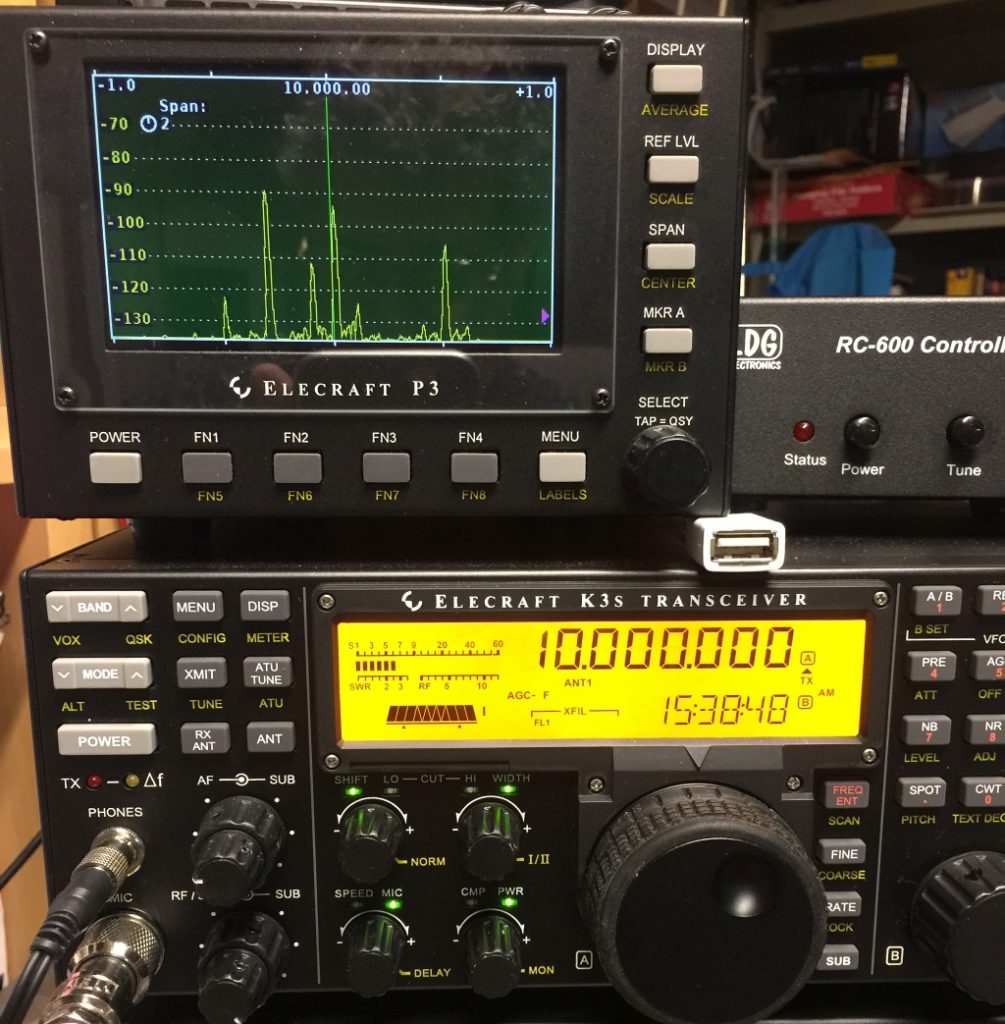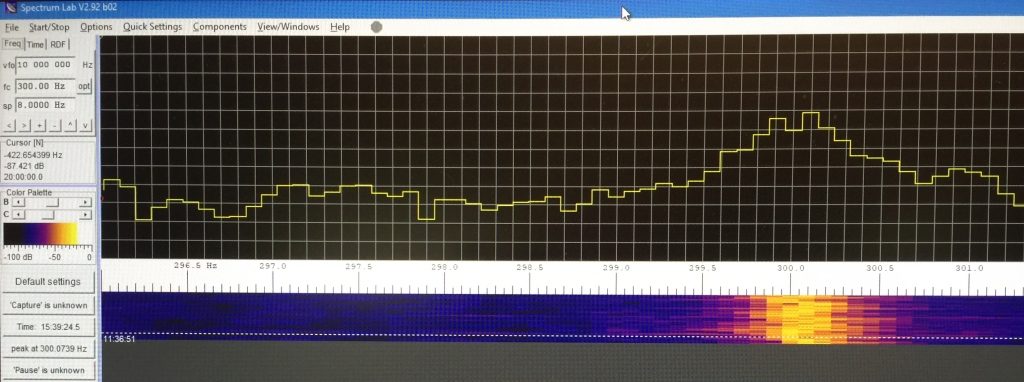2018’s first FMT is scheduled for 0100-0225 UTC on April 6 (9 PM-10:25PM EDT Thursday). It’s been many months since I’ve fiddled with my measurement gear, so today it was hooked up and will be left powered on so that things are thermally stable for tomorrow’s measuring session 32 hours from now.
I’m using a Fluke PM6685R mostly as a Rubidium Frequency Standard, but I do use the counter as a second check of my HP 3335A Synthesizer output frequency. The output of the generator is fed into the counter, and also feeds a JFW Industries 50BR-001 precision attenuator (0-110 dB in 1 dB steps). The output of the variable attenuator is fed into a fixed 40 dB 100 watt attenuator. That fixed attenuator is there just in case something bad/wrong (badong) happens and my transmitter is turned on accidentally (which reduces the 100 watts to a level low enough to avoid frying my measurement gear). The output of the fixed 40 dB attenuator is fed into a one side of a “T” connected to my Elecraft K3s setup for AM mode. The other side of the “T” is the receive antenna.
The process is to adjust the frequency synthesizer to come up on the low side of the unknown signal, producing a beat-tone of a few hundred hertz. The output of the variable attenuator is adjusted to produce a carrier that is approximately the same level as the unknown (as viewed on the Elecraft P3 Panadapter, which visually confirms that the synthesizer carrier is below the unknown carrier). That beat tone is measured with Spectrum Lab software. The unknown frequency is then equal to the frequency measured using Spectrum Lab PLUS the frequency of the rubidium-slaved synthesizer.
Groundwaves follow the earth’s surface and aren’t impacted by the ionosphere. I’ve been able to consistently measure a groundwave signal to within 5 mHz or better. The Ionosphere, on the other hand, is constantly changing and impossible to predict. Not only are the deep fades to deal with, or perhaps an ionosphere that isn’t refracting the desired signal at all. But the real complication is a Doppler effect caused by the relative motion of the ionosphere. For example, the sun’s solar wind has been pushing the ionosphere down toward the earth surface during the daytime. After sunset the ionosphere expands outward, increasing the path length, which produces an apparent drop in frequency.
Prior tests with WWV and CHU signals indicate when the MUF is above the measured frequency and the ionosphere is stable, Doppler is inserting an uncertainty of about 10 mHz. When things are unstable it is more like 250 mHz. So Doppler effects can be from 2x to 50x more significant than my ability to read an unknown frequency
Even not being able to correct for Doppler, I should still be able to get well within the 1 Hz “Green Bar” requirement as that is a factor of 4 above the maximum Doppler uncertainty that I’ve seen (based on my limited observations). That said, things move quickly and there are a lot of settings/opportunities for operator error. My fingers will be flying during the FTM. If I make a green bar reading then I can scratch one thing off my 2018 goals.











